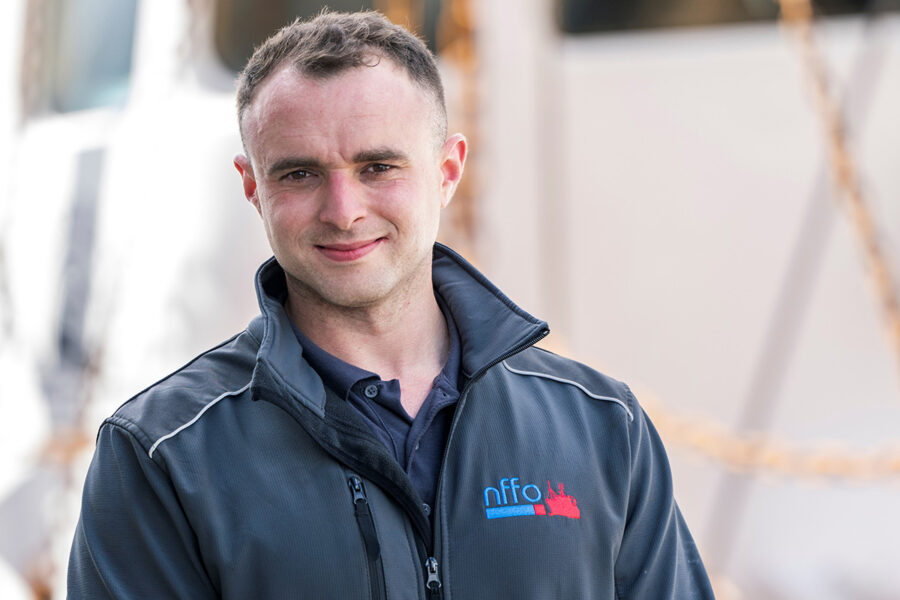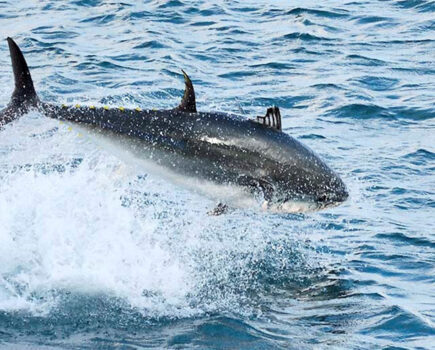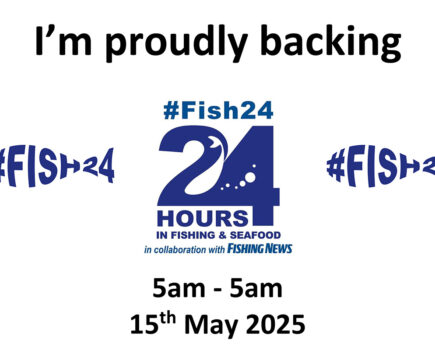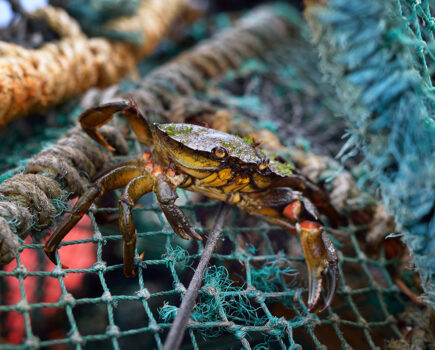“I genuinely love helping to improve safety and reduce the likelihood of an accident happening on a fishing vessel. To me, you can’t put a price on that,” Charles Blyth, NFFO risk, safety and training lead, told Fishing News.
Charles’ interest in improving safety onboard vessels stems from an unlikely, and poignant, source. “I have a particular interest in safety because I used to be an extreme kayaker. I was semi-professional, throwing myself off waterfalls and all sorts. Unfortunately, a lot of people died around me doing that sport, because it was so dangerous.
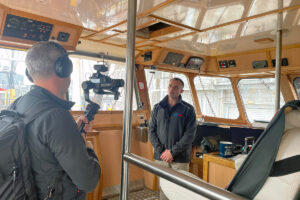
One of the projects Charles has developed includes the use of videos, funded by The Seafarers’ Charity, to help translate often complicated safety regulations. “I try and describe regulations in layman’s terms. It seems you need to be a lawyer to be able to understand the regulations properly these days. It’s very technical, and has big ramifications for individual fishermen, which I have to try and help them understand.”
“I find a lot of similarities between extreme kayaking and the fishing industry, in the context that it is a very dangerous environment, but if you find a way to limit risk in it, you can thrive – and I think the same applies to fishing. If you can do that safely, then the rewards can be excellent.”
Charles is originally from Birmingham, but has been based in Plymouth for the last 10 years. “I studied for a degree in naval architecture at Plymouth University, and during my time there I was lucky enough to be offered a graduate placement with the MCA.
“I worked there while I was at university, and then when I finished my degree I did a five-year graduate development scheme with the MCA, and I quickly took a particular interest in fishing vessels.”
During his time as a surveyor, Charles worked with a variety of independent consultants, one of whom was Nigel Blazeby, chairman of the NFFO safety committee. “I don’t know what he saw in me, but he saw something. He offered me an opportunity with the NFFO to take my own career path.”
One of the main aspects of Charles’ role is to act as a bridge between the MCA and fishermen, with the aim of helping both parties to better understand one another. “I work very closely with the MCA, and try and engage with them as much as possible.
“Due to the nature of the issues we currently find ourselves in, I provide a lot of feedback to them on how their policies are working. I try and lobby and push them to make what they do a bit more fit for purpose for our industry. A lot of my time is taken up with trying to help them understand fishing, and
to help fishermen understand a regulator’s viewpoint.”
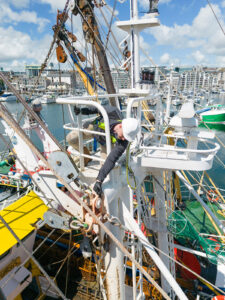
Charles in Plymouth harbour, being filmed climbing a gantry while helping the skipper of a scallop dredger inspect his lifting equipment. “I try and align the video scripts I create with the regulatory requirements, but also make sure it’s actually understandable – otherwise it’s pointless doing it. The feedback I get is that a fisherman would much rather see an intuitive video that they can relate to, instead of trying to dig out a marine guidance note and learn it that way. Fishermen are busy people – they don’t have time for that.”
Another important part of Charles’ job is to help fishermen ‘on the ground’. “I’m often in various harbours throughout England and Wales providing ‘soft’ advice. If ever anyone needs any particular MCA-related advice, I provide that to them.”
He says that on the whole fishermen find him approachable, and are happy to engage. However, ‘because they know my background, they can at first be a bit more reserved’.
“Once I get speaking to them and explain what I’m there to do, and how I’m there to help, they often loosen up. I think a critical aspect of my role is being able to speak on a level with fishermen, and not be totally detached from them.”
Owing to the fluid nature of his role, Charles doesn’t have a typical working day. However, the day always begins in the same manner. “I’m a very early riser. I often wake up at 5am or 6am, and the first thing I do is go on a big dog walk. That is my set-up for the day. It wakes me up and gets me ready.
“I’m normally back at my desk at around 7am, and the first thing I do is catch up on any emails. I get a lot of skippers and owners contacting me with questions, which I like to clear up at the beginning of every day.
“That will often define what work I need to do for the rest of that day, and if anyone needs more direct assistance. I also normally have a weekly catch-up with the head of fishing safety at the MCA, so we’ll have a Teams meeting one morning of the week and discuss what issues I’m encountering, and anything either of us can do to assist each other.
“After that, I often travel to a fishing harbour, Brixham, Newlyn, Plymouth or further beyond, to get on the ground and speak with fishermen. I have a database of NFFO members, so if I see a member in the harbour I will go and say ‘hello’ and provide any assistance they may require.”
With harbour visits complete, Charles heads back to Plymouth. “I normally head home in the afternoon or early evening to work on some of the projects I’m involved in, whether that’s the safety videos I’m currently working on, or any other projects I’m working towards.”
His position at the NFFO is partially funded by The Seafarers’ Charity, an organisation which also funds many of the projects that Charles develops to help better relay safety regulatory requirements to fishermen – including the recent series of safety videos.
“In all honesty, I hate being in front of the camera,” said Charles, laughing. “I’d quite happily be anonymous, but it’s part of my role – and it works.”
This story was taken from the latest issue of Fishing News. For more up-to-date and in-depth reports on the UK and Irish commercial fishing sector, subscribe to Fishing News here or buy the latest single issue for just £3.30 here.
Sign up to Fishing News’ FREE e-newsletter here.

